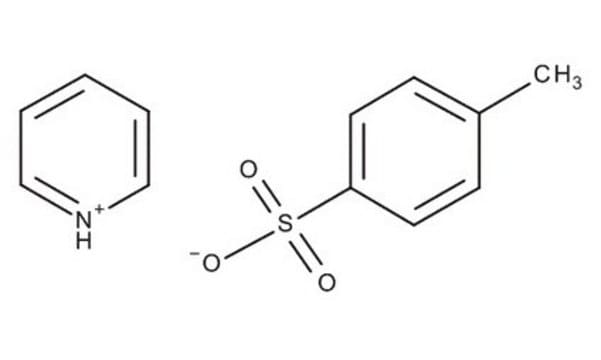936669
DPPF ChemBeads

Sinónimos:
DPPF, 1,1′-Bis(diphenylphosphino)ferrocene ChemBeads, 1,1′-Ferrocenediyl-bis(diphenylphosphine) ChemBeads, 1,1′-Ferrocenediyl-bis(diphenylphosphine), dppf
About This Item
Productos recomendados
formulario
solid
Nivel de calidad
composición
loading, 4-6 wt. %
mp
181-182 °C (dec.) (lit.)
cadena SMILES
[Fe].[CH]1[CH][CH][C]([CH]1)P(c2ccccc2)c3ccccc3.[CH]4[CH][CH][C]([CH]4)P(c5ccccc5)c6ccccc6
InChI
1S/2C17H14P.Fe/c2*1-3-9-15(10-4-1)18(17-13-7-8-14-17)16-11-5-2-6-12-16;/h2*1-14H;
Clave InChI
HPXNTHKXCYMIJL-UHFFFAOYSA-N
¿Está buscando productos similares? Visita Guía de comparación de productos
Descripción general
Aplicación
- DPPF has been used as a ligand in:
- The ruthenium catalyzed N-alkylation of amines and sulfonamides using borrowing hydrogen methodology.[1] (19191700)
- The cooperative Cu/Pd catalyzed borylallenylation of trifluoromethyl-1,3-enynes to generate conjugated bisallenes.[2] (36321461)
- The cooperative Cu/Pd catlyzed borocarbonylation of ethylene.[3] (36226440)
- The gold catalyzed synthesis of 2-phosphoryl indolin-3-ones.[4] (35815915)
- The iron-catalyzed vinylzincation of terminal alkynes.[5] (34935372) ChemBeads are chemical coated glass beads. ChemBeads offer improved flowability and chemical uniformity perfect for automated solid dispensing and high-throughput experimentation. The method of creating ChemBeads uses no other chemicals or surfactants allowing the user to accurately dispense sub-milligram amounts of chemical.
- For general uses, product is also available in powdered form (177261)
Producto relacionado
Código de clase de almacenamiento
11 - Combustible Solids
Clase de riesgo para el agua (WGK)
WGK 3
Punto de inflamabilidad (°F)
Not applicable
Punto de inflamabilidad (°C)
Not applicable
Choose from one of the most recent versions:
Certificados de análisis (COA)
Sorry, we don't have COAs for this product available online at this time.
If you need assistance, please contact Atención al cliente
¿Ya tiene este producto?
Encuentre la documentación para los productos que ha comprado recientemente en la Biblioteca de documentos.
Nuestro equipo de científicos tiene experiencia en todas las áreas de investigación: Ciencias de la vida, Ciencia de los materiales, Síntesis química, Cromatografía, Analítica y muchas otras.
Póngase en contacto con el Servicio técnico


![[1,1′-Bis(diphenylphosphino)ferrocene]dichloropalladium(II)](/deepweb/assets/sigmaaldrich/product/structures/130/734/8846aa26-1858-458a-998d-8c306c13bf0f/640/8846aa26-1858-458a-998d-8c306c13bf0f.png)
![[Pd(OAc)2]3 reagent grade, 98%](/deepweb/assets/sigmaaldrich/product/structures/508/249/99a0ef2c-b77c-4d73-8ed9-0cca05b6b41f/640/99a0ef2c-b77c-4d73-8ed9-0cca05b6b41f.png)




